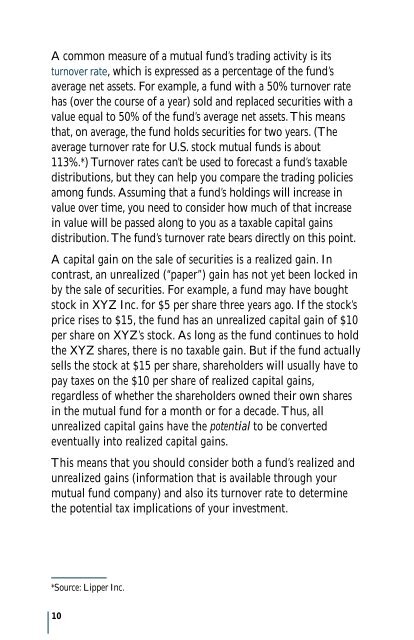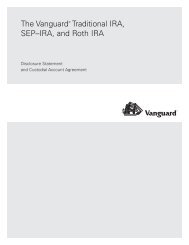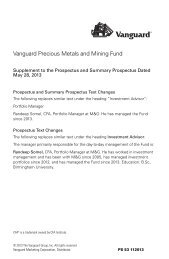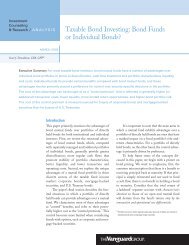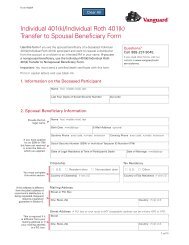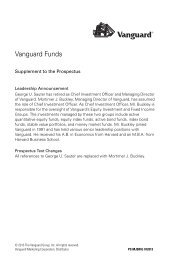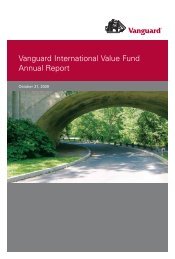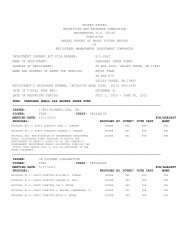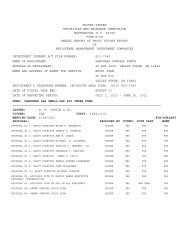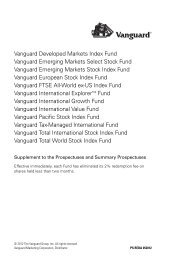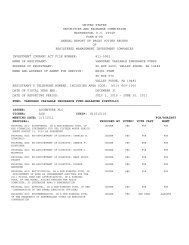Create successful ePaper yourself
Turn your PDF publications into a flip-book with our unique Google optimized e-Paper software.
A common measure of a mutual fund’s trading activity is its<br />
turnover rate, which is expressed as a percentage of the fund’s<br />
average net assets. For example, a fund with a 50% turnover rate<br />
has (over the course of a year) sold <strong>and</strong> replaced securities with a<br />
value equal to 50% of the fund’s average net assets. This means<br />
that, on average, the fund holds securities for two years. (The<br />
average turnover rate for U.S. stock mutual funds is about<br />
113%.*) Turnover rates can’t be used to forecast a fund’s taxable<br />
distributions, but they can help you compare the trading policies<br />
among funds. Assuming that a fund’s holdings will increase in<br />
value over time, you need to consider how much of that increase<br />
in value will be passed along to you as a taxable capital gains<br />
distribution. The fund’s turnover rate bears directly on this point.<br />
A capital gain on the sale of securities is a realized gain. In<br />
contrast, an unrealized (“paper”) gain has not yet been locked in<br />
by the sale of securities. For example, a fund may have bought<br />
stock in XYZ Inc. for $5 per share three years ago. If the stock’s<br />
price rises to $15, the fund has an unrealized capital gain of $10<br />
per share on XYZ’s stock. As long as the fund continues to hold<br />
the XYZ shares, there is no taxable gain. But if the fund actually<br />
sells the stock at $15 per share, shareholders will usually have to<br />
pay taxes on the $10 per share of realized capital gains,<br />
regardless of whether the shareholders owned their own shares<br />
in the mutual fund for a month or for a decade. Thus, all<br />
unrealized capital gains have the potential to be converted<br />
eventually into realized capital gains.<br />
This means that you should consider both a fund’s realized <strong>and</strong><br />
unrealized gains (information that is available through your<br />
mutual fund company) <strong>and</strong> also its turnover rate to determine<br />
the potential tax implications of your investment.<br />
*Source: Lipper Inc.<br />
10


